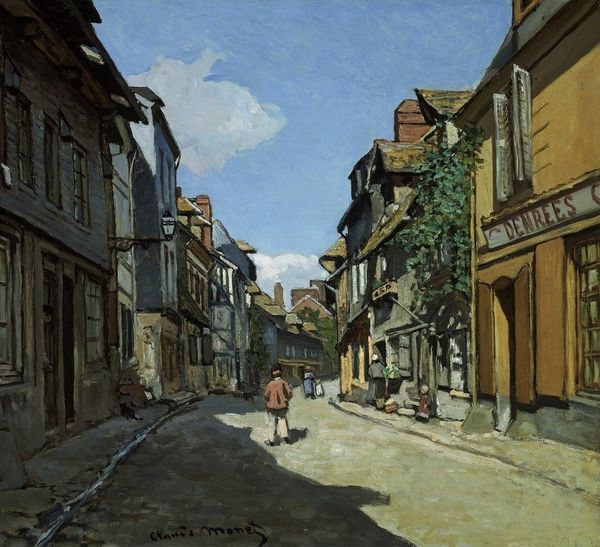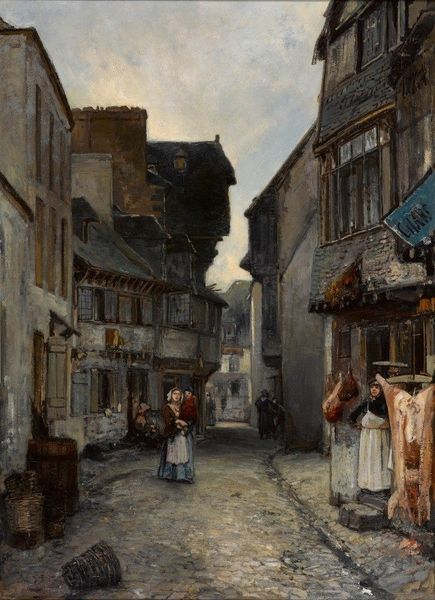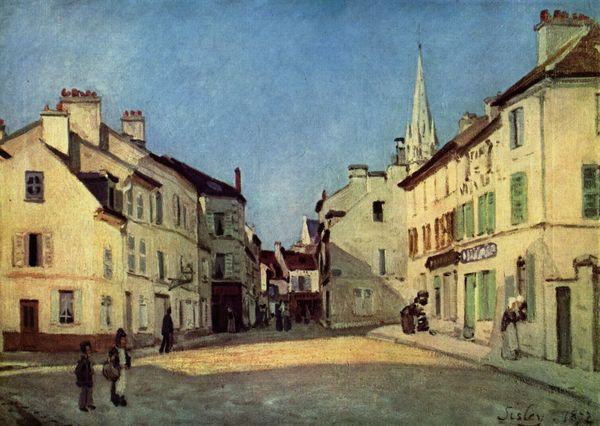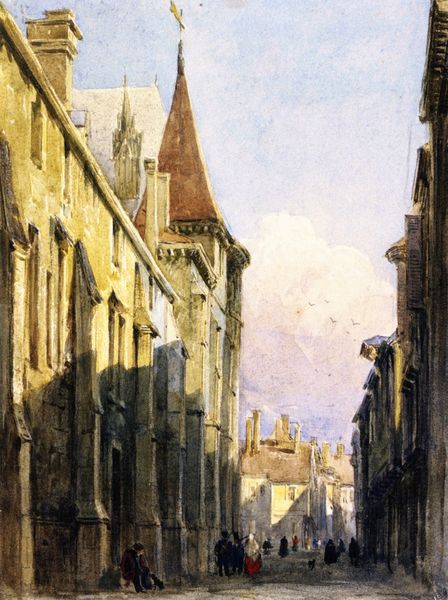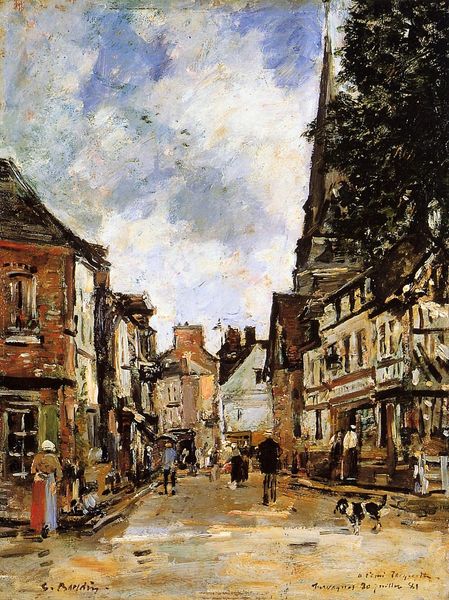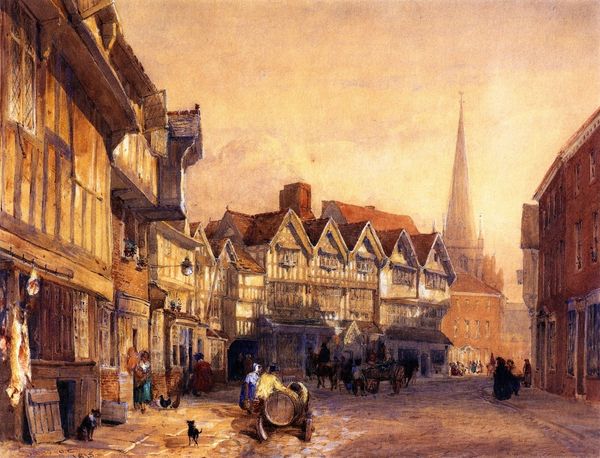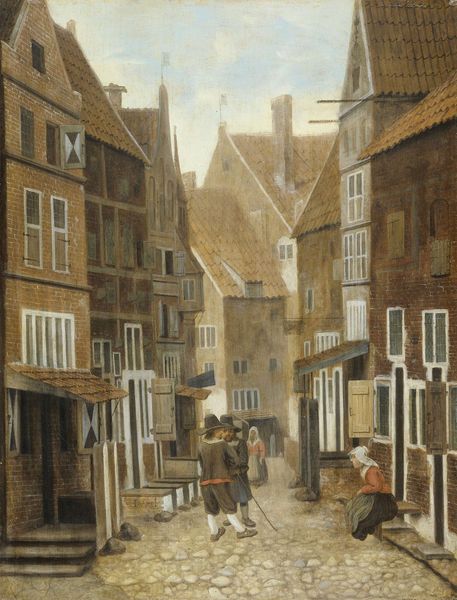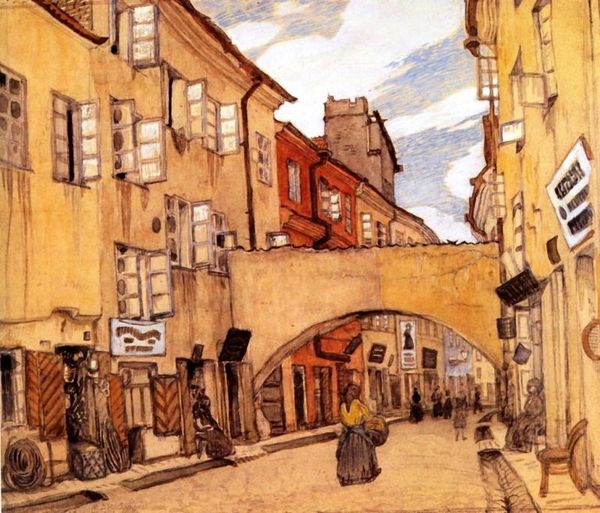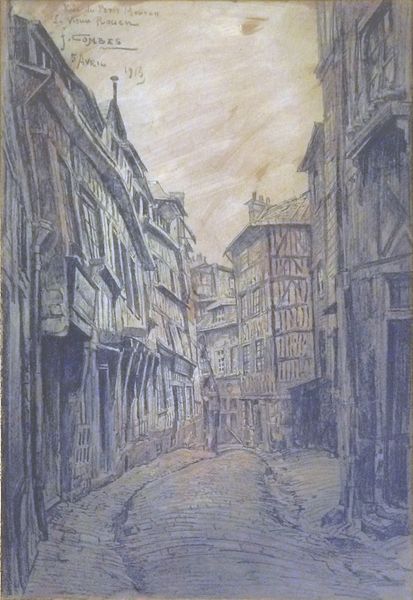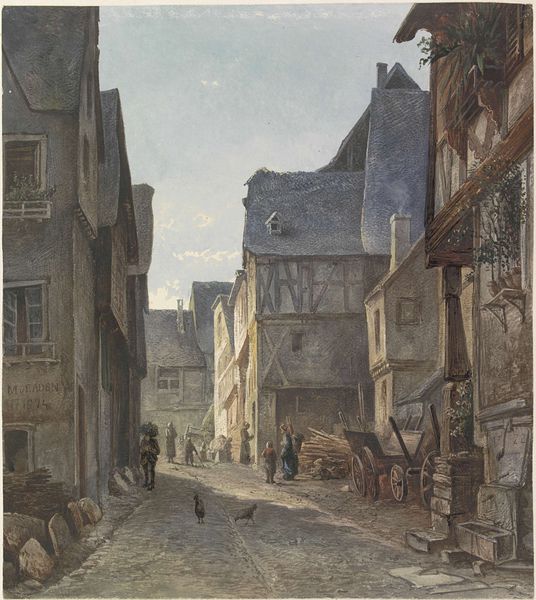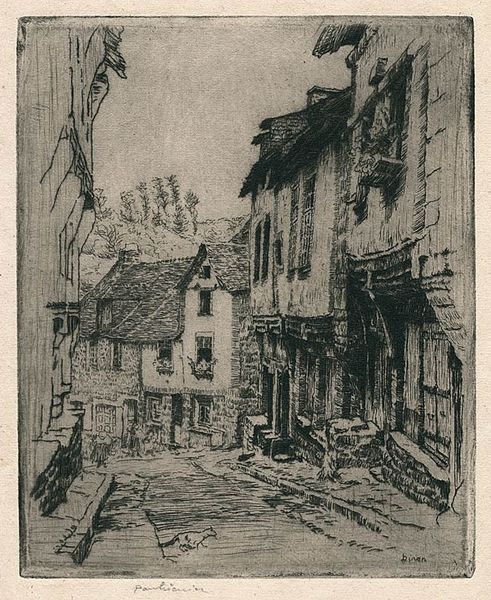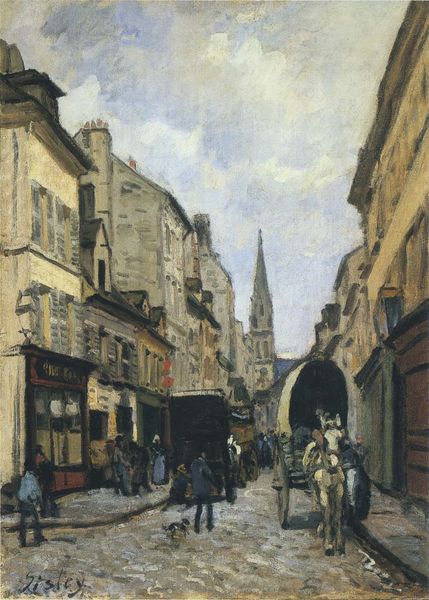
painting, oil-paint
#
tree
#
urban landscape
#
painting
#
impressionism
#
street view
#
oil-paint
#
landscape
#
oil painting
#
road
#
men
#
cityscape
#
genre-painting
#
street
#
building
Copyright: Public domain
Curator: Claude Monet’s “Street of the Bavolle, Honfleur,” painted in 1864. The medium, as one might expect, is oil on canvas. Editor: The light is…wondrous! That shimmering wet street, it feels like I'm right there, about to step into the scene. Curator: Indeed. The materiality is striking; look closely, and you’ll notice the brushstrokes, how they describe the rough textures of the buildings and the street's surface. What does that level of engagement reveal about his artistic labour, about his process? Editor: The almost blurry, impressionistic rendering certainly breaks away from academic painting of the era and it feels alive. Is it too much to say it's as if Monet isn't painting the street but capturing its soul, or the vibe if you will. It looks melancholy in a way… the hustle and bustle still feels like something out of a dream. Curator: I find that the details reveal more of daily labour, of class. From my perspective the very subject matter – the everyday scene of a street rather than idealized historical settings — this challenges what "high" art could represent and to whom it could appeal. Also, consider that commerce, consumption – the sign that reads 'Denrees'– were things happening within the physical scene before it was recorded and exists in relationship to this record. Editor: Fair, the subject is, admittedly, pretty grounded. But, to me, the atmospheric quality overrides those more sober aspects you raised and yet maybe, that in itself can give some food for thought about labour. How are moods related to certain types of work in time and place, you know? It does lead the viewer into feeling something and engaging more, reflecting. Curator: Precisely, it provides a portal, allowing a reimagining not just of form, but perhaps societal concerns such as consumerism during an age in upheaval. This adds a depth. The act of observing is a commentary on everyday existence within those contexts. Editor: Hmm, okay, well that makes sense when you break it down. What looked pretty romantic suddenly reveals, if only as subtext, more concrete truths about making a life and all its material necessities in a burgeoning economy. Curator: And vice versa. It reveals Monet's keen observation of the working conditions around him as an element in his process. Thank you for the exchange! Editor: A-ha, a true gift from laboring alongside you in this piece’s appreciation, thanks!
Comments
No comments
Be the first to comment and join the conversation on the ultimate creative platform.
